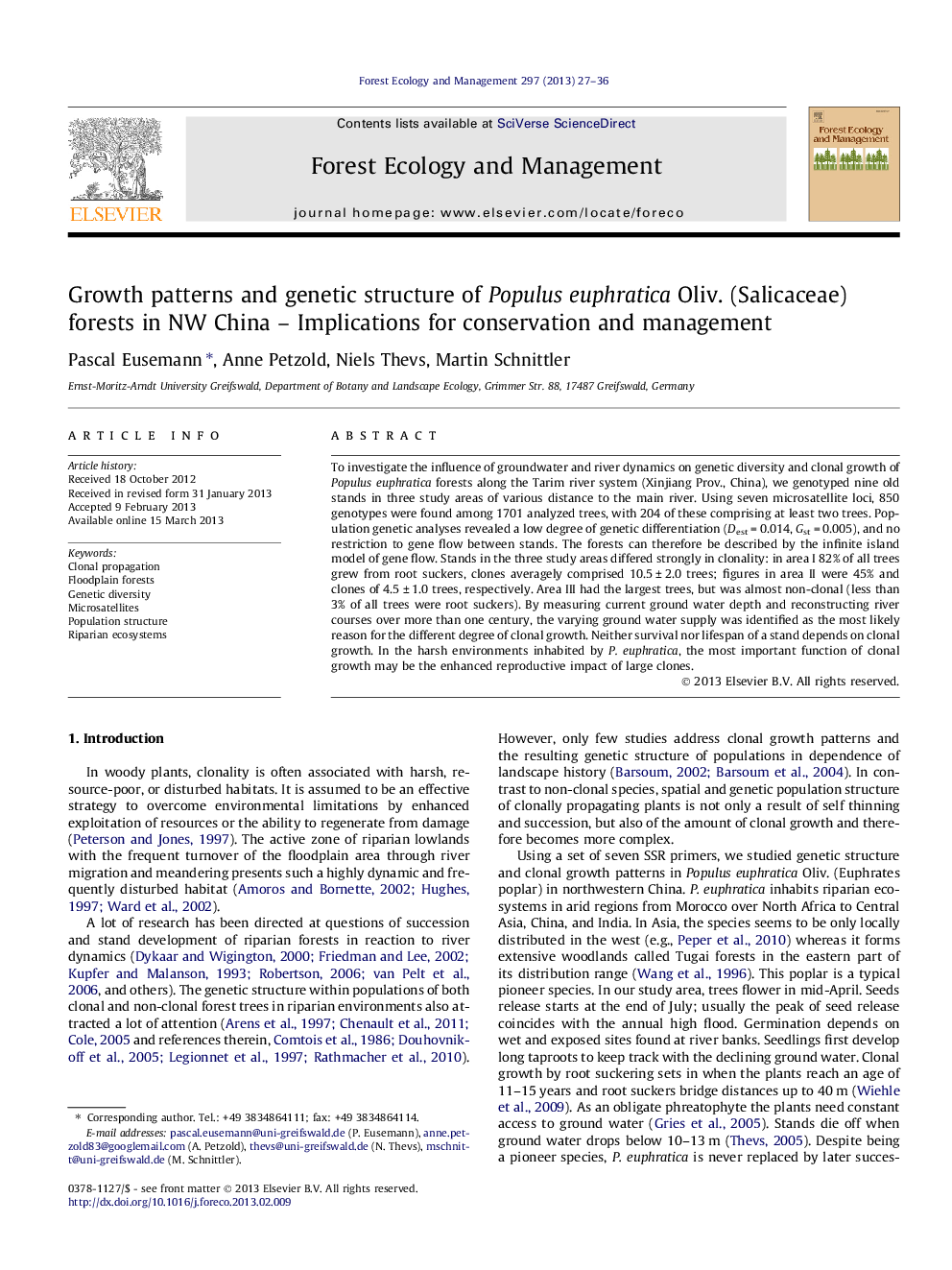| Article ID | Journal | Published Year | Pages | File Type |
|---|---|---|---|---|
| 87096 | Forest Ecology and Management | 2013 | 10 Pages |
To investigate the influence of groundwater and river dynamics on genetic diversity and clonal growth of Populus euphratica forests along the Tarim river system (Xinjiang Prov., China), we genotyped nine old stands in three study areas of various distance to the main river. Using seven microsatellite loci, 850 genotypes were found among 1701 analyzed trees, with 204 of these comprising at least two trees. Population genetic analyses revealed a low degree of genetic differentiation (Dest = 0.014, Gst = 0.005), and no restriction to gene flow between stands. The forests can therefore be described by the infinite island model of gene flow. Stands in the three study areas differed strongly in clonality: in area I 82% of all trees grew from root suckers, clones averagely comprised 10.5 ± 2.0 trees; figures in area II were 45% and clones of 4.5 ± 1.0 trees, respectively. Area III had the largest trees, but was almost non-clonal (less than 3% of all trees were root suckers). By measuring current ground water depth and reconstructing river courses over more than one century, the varying ground water supply was identified as the most likely reason for the different degree of clonal growth. Neither survival nor lifespan of a stand depends on clonal growth. In the harsh environments inhabited by P. euphratica, the most important function of clonal growth may be the enhanced reproductive impact of large clones.
► Study on structure, gene flow, and clonality of Euphrates poplar forests in China. ► Even highly fragmented and isolated stands are reproductively connected. ► No genetic differentiation between forests close to the river and isolated stands. ► Clonal growth produces contiguous forests, but only if groundwater supply is good. ► Dispersal abilities and groundwater supply important for management/conservation.
